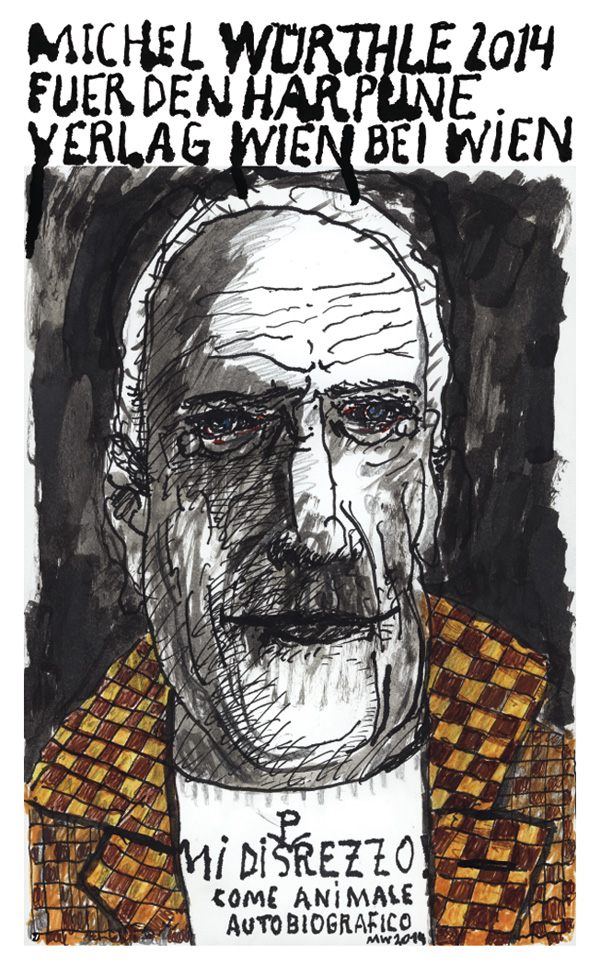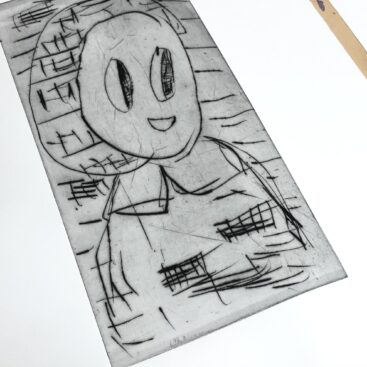
André Butzer
3 DRYPOINT ETCHINGS 2022
We are more than happy to present three new drypoint etchings by André Butzer!
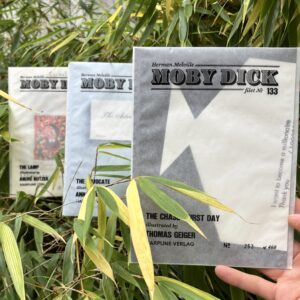
NEWNEWNEWNEWNEWNEWNEW!
THREE MOBY DICK FILETS
By ANDRÉ BUTZER, THOMAS GEIGER and ANNA PAUL! Check out the wonderful works these three Artists contributed to the great white whale project!
There they blow!
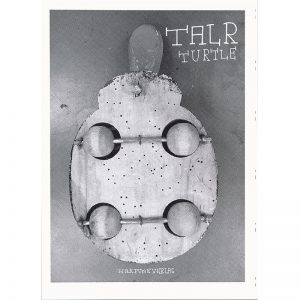
Tal R
THE LAST COPIES OF TURTLE
Don’t miss the chance to get one of the last copies of Tal R’s epic Turtle linocut book – 60 linocuts printed as original graphics in all thinkable shades of red in a huge format of 44×32 cm!!!
Edition of 350! Crazy!
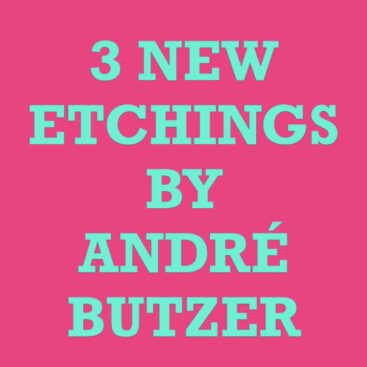
ABOUT HARPUNE

S.Bogner and J.Zekoff crossing Ping Pong rackets on the occasion of Andreas Breunig’s show Play Me Have No Probs at Kunstverein Heppenheim, 2020

Salvatore Viviano, S.Bogner and J.Zekoff celebrating the release of Salvatore Viviano’s epic artist book THE OWG DIARY at Vienna’s legendary Hotel Bristol, 2018
Established 2010 and Home of Moby Dick Filet™ since 2011 – Harpune is a division of an enterprise formed by Sarah Bogner and Josef Zekoff in the spirit of limitless publishing and art. Harpune is focusing on close collaboration with artists from all around the world and forms groups and cells to achieve infinite joy in everlasting publications.
" ~ "

They look great, feel great, smell great. And I bet they taste great, too. Thanks for the care!«
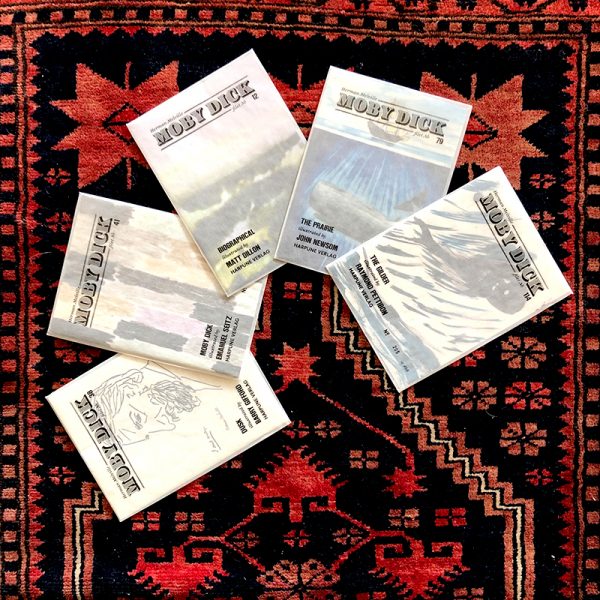
for late hours!«

and you'll never walk alone«
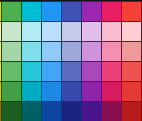
HARPUNE — ANGLING FOR BOOKS
Sarah Bogner and Josef Zekoff in conversation with Simone Moser, Head of MUMOK Library, for the series ART BOOK DAY on MUMOK’S blog
Simone Moser: You founded Harpune Verlag together in 2010. What compelled you to get into the industry? What is your agenda, and what does the name Harpune stand for?
SB/JZ: We started the business in order to work with other artists. We wanted to form temporary groups of artists, a new group with every book. Like a crew assigned for a long cruise, an Atlantic crossing, or island hopping. The destination is the artist book that we create together. And ultimately, of course, also the idea of a long-term collaboration—once you’ve survived the turbulent sea together, you crew up together again. The name Harpune is also seen in this context. Even though we are called Harpune Verlag, we haven’t left art. To be honest, to this day we don’t operate within the publishing industry—we perhaps brush past it occasionally, but everything we do in fact happens under the general rubric of “art.”
SM: You work and publish a lot with other artists. How did that come about? Does the fact that you are also artists play a role?
SB/JZ: All our books have collaborative elements. For us it’s always about exchange, moving around on a mutual playing field. The books we make would probably never be published in a “book publisher’s”—they are purely things of art.
SM: Your publishing program is extremely varied: from signed linen-bound one-offs to paperbacks and artzines, from prices on request to really affordable € 10 books. Is there a common thread that runs through your program?
SB/JZ: The common thread is the motivation to find the right profile for each project. The concept for every true artist book is always new; you actually start from scratch each time. It is from there that the most diverse books, objects, and editions are created. Sometimes even first translations, as in our Livre de Peintre Flametti by Tal R and Hugo Ball, which in fact is an original graphic edition of 30 and later went on to be published in English by Wakefield Press in paperback in a huge print run. Even with limited original graphic editions, it is important to us that the content remains accessible, so that’s why there is a paperback or zine version of most of them.
SM: A special feature of Harpune Verlag is that you’re running your own printing workshop with Neue Satz Wien, and you, Sarah, are mastering the old technique of metal typesetting. That sounds like skillful typography between old-fashioned and avant-garde. How does that influence your work?
SB/JZ: IN 2011 I took over an anachronistic letterpress workshop and learned the craft. So we have several large, heavy machines at our disposal. This gives us the opportunity to incorporate, where suitable, various printing and bookbinding techniques into our production. By doing this we can experiment a whole lot and realize things ourselves that would otherwise not be possible.
SM: The series Moby Dick Filet is published one chapter at a time. What’s behind that? Why fillet Herman Melville’s book in so many pieces, and what role does the number 136 play in this?
SB/JZ: Moby Dick Filet is our longest-running and most exciting publishing experiment. We fillet the famous novel on Captain Ahab’s hunt for the white whale into its 136 chapters and publish them as a form of dime novel, but not chronologically. The artists that we invite select a chapter that they then design. The only premise is that the text by Herman Melville appears in some form or other and remains readable. For us, it’s a great way to be able to work together with a great variety of artists. Through this, a connection is also created among the artists — that’s the idea of the artist groups, again, that in fact runs through everything we do.

